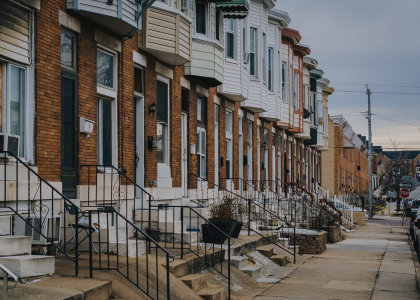Climate plans seem to be everywhere these days. Joe Biden released a new one shortly after the House Select Committee on the Climate Crisis released its own. They join the draft CLEAN Future Act from the House Energy and Commerce Committee and a package of bills from Minority Leader Kevin McCarthy and other House Republicans.
We need bold legislation to slash greenhouse gas emissions and protect vulnerable communities. But enacting and implementing bold legislation takes time. As we work on that, federal agencies can do a lot to address climate change under existing law, and indeed, they are often required to. They should look at homes and commercial buildings, which are responsible for about 40% of U.S. carbon dioxide emissions and energy use. While state and local governments have the lead responsibility to limit energy waste and excess emissions from these buildings, the federal government also has important roles.
Here are three things federal agencies can do now—or early in 2021:
Set energy-saving standards for new manufactured homes.
Almost 100,000 new manufactured homes (also called mobile homes) were shipped last year, and almost seven million are in use, a majority by families with annual income under $30,000. Most residents pay energy bills that are far too high because the federal efficiency standard has not been updated since 1994. In 2007, Congress told the Department of Energy (DOE) to set a new standard, but buyers are still waiting. DOE can protect owners and tenants and cut emissions at the same time just by setting a standard like the energy code for “stick-built” homes. A negotiated standard proposed by DOE in 2016 (but never finalized) would have saved residents almost $4,000 over the lifetime of their home (net after the added cost) and cut U.S. carbon dioxide emissions by 160 million metric tons.
Require 2021 building code for new homes receiving Federal Housing Administration loans.
The Departments of Housing and Urban Development, Agriculture, and Veterans Affairs require new homes with FHA loans and other federally assisted mortgages to meet building energy codes, in part so energy waste does not prevent owners from being able to pay their mortgages. Again, these are often families that can’t afford the waste, and the requirements also apply to some public housing. Those loans include about a quarter of mortgages for new homes. But the criteria are mostly stuck at the 2009 International Energy Conservation Code (believe it or not, the VA’s requirements are much further behind). Using the new 2021 code would cut covered energy use by at least a third (assuming it is not weakened at the last minute). The agencies should adopt it and help builders learn how to meet it. Fannie Mae and Freddie Mac, both effectively owned by the federal government since the last recession, could ensure that even more new homes are efficient.
Make federal buildings leaders in energy and water efficiency.
As the biggest energy user in the country, the federal government should ensure its own buildings lead the way to climate neutrality. New federal buildings are supposed to be 30% more efficient than code. But the reference for commercial buildings is still the 2013 code—the same old story. DOE should update it, but the president should go further. An executive order could direct new federal buildings to be state-of-the art in efficiency, to meet remaining power needs as much as possible from on-site renewables, and to help stabilize the electric grid. It also could restore energy- and water-saving targets for existing buildings and direct that they be made highly efficient when they are renovated—what are often called “deep retrofits,” the success of which has been demonstrated in more than a dozen federal buildings.
Clearly, federal agencies can craft policies with substantial impact. Just three policies under the Obama administration—fuel economy and emissions standards for cars and trucks, appliance efficiency standards, and the Clean Power Plan for existing power plants—were set to reduce U.S. carbon dioxide emissions by as much as one billion tons a year by 2040, or by about a fifth. They also were set to save families and businesses $400 billion in energy each year.
The current administration has blocked as much of those savings as it could. Agencies have repealed the Clean Power Plan, rolled back standards for cars and light trucks, repealed or blocked standards for light bulbs, and changed the rulemaking processes to make it hard for the next administration to repair the damage. And yet, electric vehicles, LED lights, solar and wind power, and other technologies continue to get better and less expensive all the time, so savings opportunities are even greater now.
Should there be a new administration next year, it will need to reverse the damage as quickly as it can as part of sweeping efforts to address climate change. We know that reducing energy waste throughout the economy can cut U.S. greenhouse gas emissions in half. But making all the homes, commercial buildings, appliances, manufacturing plants, cars, and trucks more efficient will take decades. The federal government can kick-start that process not just through big climate legislation, but by following the current law and updating its standards now.


